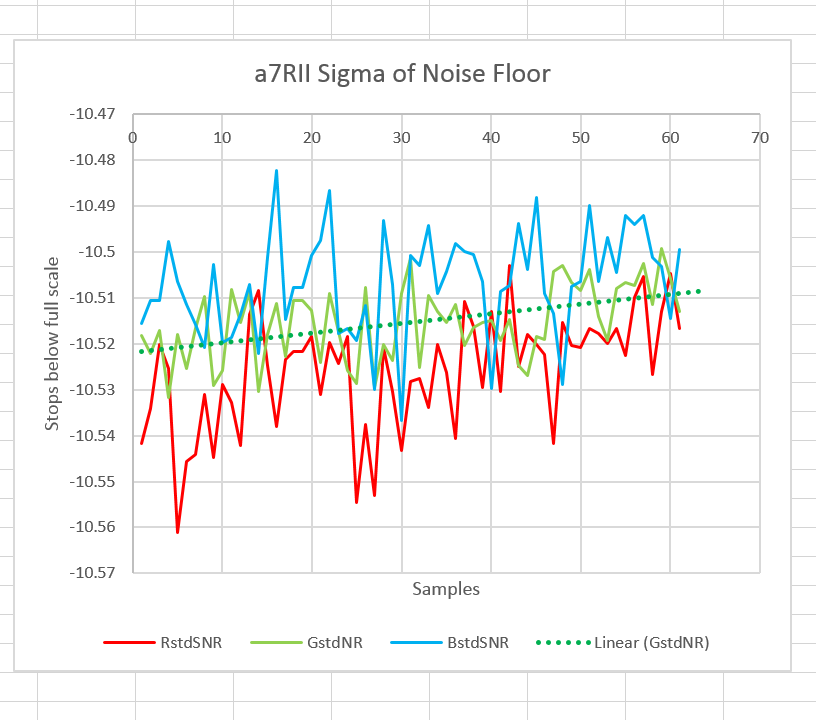Before I get too far into testing a camera, I do a series of exposures calculated to see if there are self-heating effects that might skew my test results. Since many of my tests involve making series of sequential exposures that are later subjected to statistical analysis, material self heating can force me to slow down my testing.
I made 60 exposures in single shot drive mode with the lens cap on the shutter at 1/2000 second and the ISO set to 6400. I made the exposures as fast as I could, limited later in the series by the rate that the camera could write to the flash card.
Here is the standard deviation of three of the raw channels in a central 400×400 block of the image, for each exposure:
The dotted line is a least-squares fit of a straight line to the green data.
There is no evidence of material self-heating.

Frick Schmidt says
Are there any issues with shutter blur as with the previous A7r?
Thank you in advance.
F.
Jim says
Haven’t tested that yet, but I doubt there will be in EFCS mode, since EFCS works so well in the a7, a7S, and a7II,
Jim